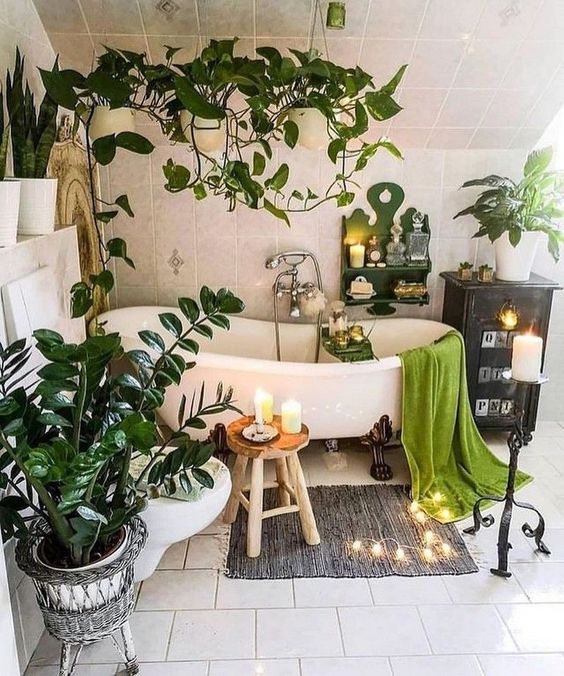First, it was stocking toilet paper. And then everyone started baking banana bread and making dalgona coffee. Indeed, the quarantine has introduced us to many fascinating trends.
While the next trend is actually not new, it is gaining more and more popularity. As of writing, the hashtag #plantparent on TikTok has 319 million views. In the year of self-isolation and staying at home, we can find comfort and a piece of nature in indoor plants.
The 2007 research study conducted by NASA confirmed what wise sages knew all along, surrounding ourselves with plants is good for our health. The study found that houseplants can remove 87% of air toxins within 24 hours. The lead researcher, Dr. Wolverton, phrased his findings in a way that remains relevant for us today. “If man is to move into closed environments, on Earth or in space, he must take along nature’s life support system.” Plants.
Their health benefits are motivational enough to start us digging. But anyone who has ever tried to raise a little potted plant in their college dorm room knows how frustrating plant parenting can be. Plant care is not instinctual, and there are things we do out of our common sense that do more harm to plants than good. Take me, for example, before becoming a full-fledged plant mom, I watered my plants daily!
If you have been led to believe that only those who have green thumbs can grow plants, this list is for you. Yes, plant parenthood comes more naturally for some people. But the truth is, with enough research and effort, you can have a thriving indoor jungle.
5 Easy Low-Maintenance Plants for Plant Parents
These plants are hard-to-kill and can withstand a few days of neglect. Start with any one of these beauties and test out your discipline and patience.
Golden Pothos Vine
One of the most popular and easiest plants to care for, the Golden Pothos vine is also known as the Devil’s Ivy. Even if you keep it in the dark, it can stay green all year long. It is almost impossible to kill, thus the name.
The golden pothos was one of the plants tested in the NASA study mentioned above. It has been shown to absorb formaldehyde and convert it into sugar or amino acids. It can also decompose benzene and other chemicals.
Place this somewhere with partial sun or partial shade. Water once each week or when the soil has dried out.
Sansevieria or Snake Plant
With sword-like leaves, this eye-catching plant is a perfect addition to your home. There are many kinds of sansevieria plants with different patterns. Some have green on green stripes while the mother in law’s tongue variety has yellow leaf margins.
Like the golden pothos, this plant was also tested by NASA scientists and is proven to have purifying benefits. The snake plant releases oxygen while absorbing carbon dioxide, which can increase ion concentration indoors. Growing them in your home office or bedroom can help improve focus, reduce blood pressure, and relieve stress.
For those with self-proclaimed brown thumbs, start with this and maybe even work a snake plant collection. Water once a week only or once the soil has dried out. Make sure to completely drain any excess water.
Peace Lily
Strikingly beautiful, the historical rumor was that when European adventurers first discovered this perennial herb, it was found along the riverside. The white flowers reminded them of peace, so it was called the Peace Lily.
The peace lily prefers partial sun to partial shade. It thrives the most in humid conditions, but it can also grow comfortably in your home. Do not place it in areas with drafts or rooms that are unheated.
Spider Plant
If you’re simply looking for greenery in your house without the need to keep checking on your plant, you can start with this ornamental plant. It is adaptable to most soils and temperatures.
Not only is it easy to care for, but it is also easy to propagate. Looking like spider legs, it produces small ‘spiderettes’ at the end of its leaves. Leave it attached to the mother plant and set it in a pot of soil. Once it takes root, you may clip it from the mother plant.
Cacti and Succulents
Finally, one of the most low-maintenance plants to care for: cacti and succulents. As an aspiring plant-parent, first, know that cacti and succulents are not the same plants. Most cacti are classified in the succulent family, but many succulent plants are not cacti. The most common way to determine this is that all cacti have bumps called ‘areoles’ where spikes or hair grows.
This class of plants is slow-growing and can withstand even the most horrible of plant parents. If you place them at a strategic part of your house, they can even thrive on neglect.
But they are best cared for in bright lights, well-draining pots, and as little water as possible.
Get Started Now as a Plant Parent!
Start with one of these plants or get all of them and have a beginner’s collection. It’s up to you! Just remember, like human children, each plant is different and will need some level of your attention. Low-maintenance does not mean no-maintenance, after all.
Plant parenting is a form of self-care. Enjoy the process of waiting and caring for something. May you and your plant thrive for the rest of the year.
